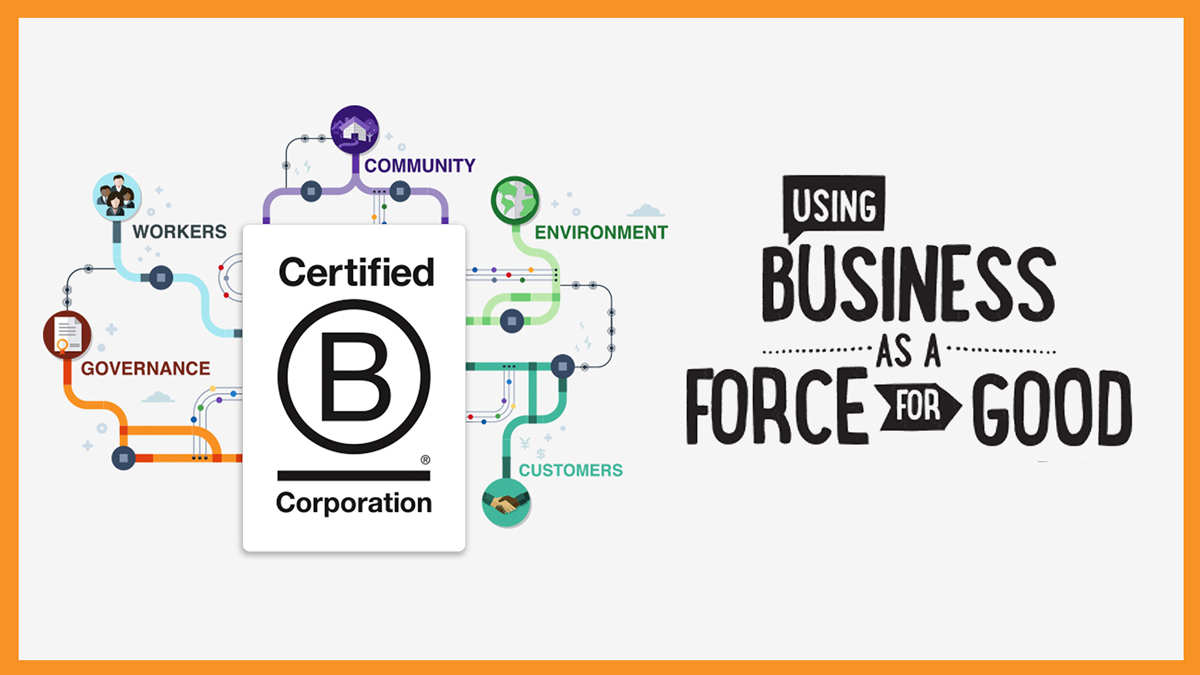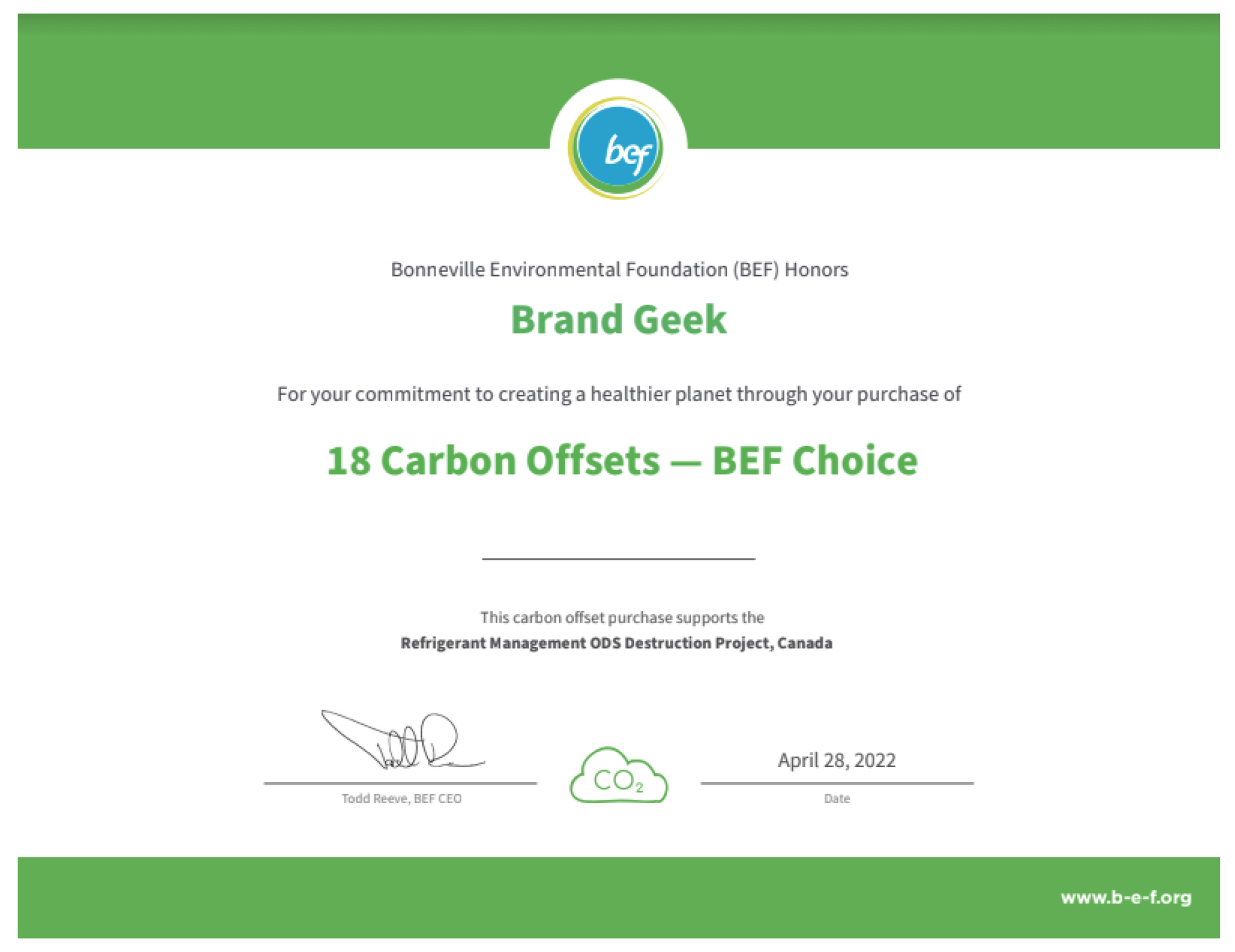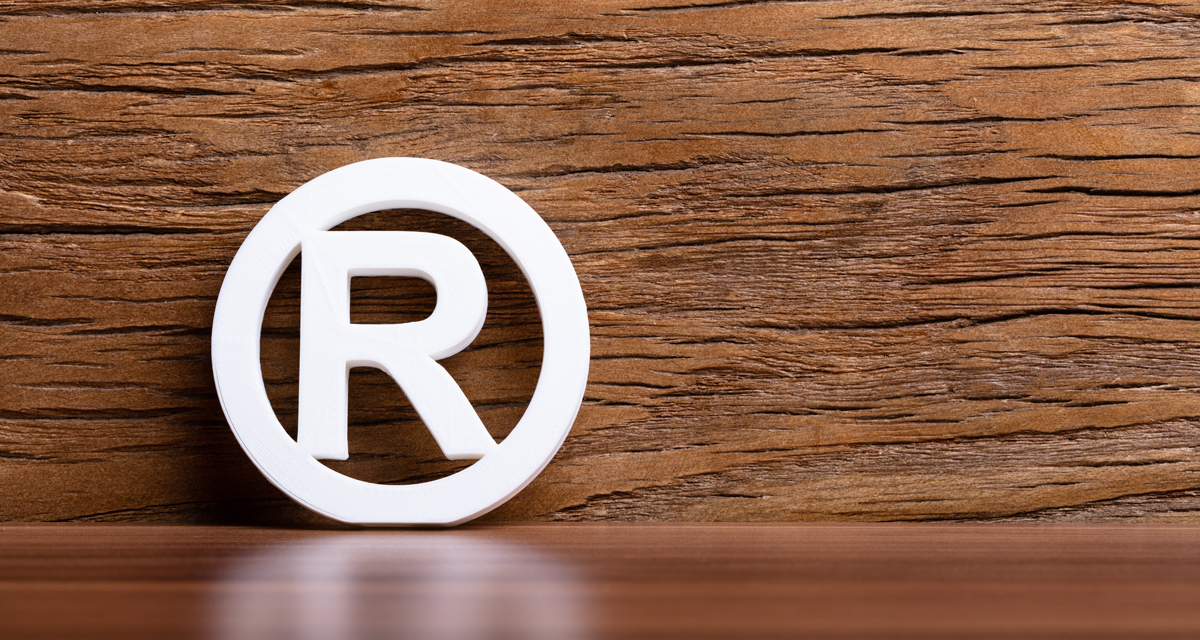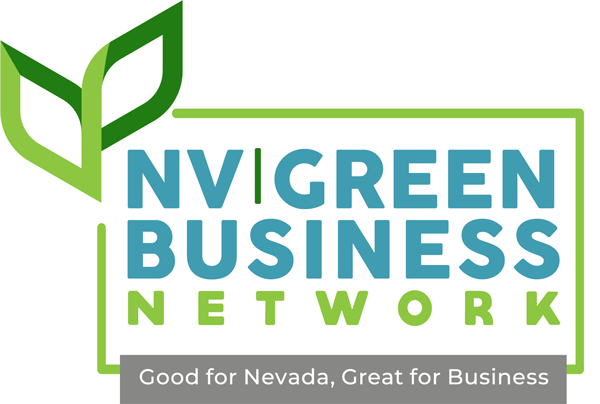Answers to frequently asked questions regarding intellectual property rights, copyrights & trademark law and protecting your brand.
When Should I Call an Intellectual Property Lawyer?
Not sure when to contact a copyright or trademark lawyer? Contact a trademark and copyright attorney when you:
- want to know if a new mark (brand, logo, tagline, etc.) is available
- want to adopt a new mark that you expect to be in use for a while (several years) and would be upset to see a competitor use something identical or similar to
- plan to engage in a relationship with a third party that involves use of your or the other party’s trademark and copyright
- find yourself in a trademark or copyright ownership or breach of contract dispute or if you are accused of infringement or believe someone else to be infringing on your intellectual property rights
- want to ensure that your company is protecting its valuable intangible assets
- begin to prepare for a financing or merger/acquisition event.
Why Copyright?
Copyright protects “original works of authorship” that are “fixed in a tangible medium of expression.”
Copyright does NOT protect ideas.
Rather, copyright protects the creative expression of ideas.
Copyright protects the following types of works:
- Literary and other textual works
- Musical works, including any accompanying lyrics
- Dramatic works, including any accompanying music
- Pantomimes and choreographic works
- Motion pictures and other audiovisual / multi-media works
- Pictorial, graphic and sculptural works
- Photographs
- Architectural works
Further, the owner of a copyright has the exclusive rights to:
- Distribute, sell or otherwise transfer the work
- Display the work publicly
- Perform the work publicly
- Prepare “derivative works,” based on the original work
- Publicly perform a sound recording by means of digital audio transmission
Things NOT subject to copyright protection include: titles, phrases, slogans, short names, familiar symbols or designs, facts, ideas, methods and works that contain no original authorship and / or consists of material or information that is in the public domain.
Copyright protection exists from the time that the work is memorialized. Registration is not required for copyright protection to exist, but is required to file a copyright infringement lawsuit, regardless of the relief sought (monetary damages or equitable relief). Copyright registration also benefits the owner by creating a public record of the creation of the work and its ownership. Timely copyright registration may also make attorneys fees and statutory damages available in a court action for infringement. Copyright protection lasts for the life of the author plus 70 years. If the work is a “work for hire,” (if the author is a corporation), protection lasts for 95 years from the publication date or 120 years from the date of creation, whichever is shorter.
What Every Business (& Corporate Attorney) Should Know About Intellectual Property
Every hour of every day each of us deals with one or more forms of intellectual property. We deal with it at home, at work and during our free time. Every time we buy something we deal with brands (trademarks).
Almost everything we read, listen to or watch is protected by copyright. Daily, we use inventions that are or were protected by patents. And every time we have a Coke or Pepsi, we are drinking something whose formula is a heavily guarded trade secret. Each one of us also has a right of publicity, which allows us each to determine how our name, image or likeness is used for profit. As a business owner, employee or lawyer, the first step is learning how to identify your company or client’s valuable intellectual property assets so that you can take the next step to protect these assets.
The commonly used shorthand for intellectual property is “IP,” which will be used interchangeably with the term intellectual property in this article.
EVERY BUSINESS OWNS INTELLECTUAL PROPERTY!!!
There are 4 main areas of IP: copyrights; trademarks; trade secrets and patents:
- Copyrights are creative works of expression, such as artwork, photography, graphic design, music, text, source code, architectural works and boat hulls.
- Trademarks are what businesses use to identify and distinguish what they offer in the marketplace from that which is offered by others, and includes brands, logos, slogans, and taglines.
- Trade Secrets are business secrets that are not known, nor easily learned, by people outside the company.
- Patents are unique inventions, designs or processes.
IP rights are exclusive because they allow the owner to exclude others from using its IP.
Ownership of IP assets entitles the owner to certain rights. Most importantly, IP owners may prevent others from using their IP without permission and / or the payment of a fee (usually referred to a licensing fee or royalty rate). It is sometimes simpler to understand IP rights in terms of what the IP owner can prevent others from doing with its IP.
Copyrights owners have the sole and exclusive right to copy, transfer, and publicly perform or display (whichever is applicable) their works, as well as to create derivative works, which are works that are based upon the copyright owner’s original creation. They may also prevent all others from exercising these rights without permission, which usually includes payment of a licensing and / or royalty fee.
Trademarks owners have the sole and exclusive right to use their mark on their goods and / or services and to prevent all others from using the same or a similar mark for the same or similar goods and services.
Trade Secrets owners have the sole and exclusive right to benefit from use of their secret(s) and to prevent the unauthorized use and disclosure thereof.
Patent owners have the sole and exclusive right to create or utilize the invention / process covered by the patent and to prevent all others from creating / using an identical or equivalent invention or process.
IP owners may also transfer some or all of their rights permanently to one entity (by an assignment) or for a limited duration to one or more entities (through licensing). An assignment terminates the IP owner’s rights and transfers those rights to a third party. Licensing enables an IP owner to continue to use its IP at the same time as one or more others are using it.
The duration of IP rights depends on the nature of the IP.
IP assets are valuable to your business because they are unique and exclusive. No one else has or can legally use those assets without your permission. A company can use its IP to generate revenue from third parties through licensing agreements. Unauthorized use of IP is considered “infringement” and may be remedied by sending cease and desist letters or by filing a lawsuit.
Copyrights rights’ duration depend upon who created the work and when. If the work was created and owned by an individual author after January 1, 1978, copyright protection lasts during the author’s life, plus 70 years after the author’s death. For works owned by a corporation (“works made for hire”) that were created after January 1, 1978, the duration of copyright will be 95 years from first publication or 120 years from creation, whichever is shorter. For works created before 1978, one must determine who created the work and when and then consult the Copyright Act to determine the duration of rights under the applicable version of the Act.
Trademarks rights last as long as the mark is used properly. Proper use includes preventing infringing uses and avoiding naked licensing (licensing without quality control) of the mark.
Trade Secrets rights exist as long as the secret remains secret. Disclosure of the secret, even through unauthorized means, can eliminate the trade secret.
Patent rights’ duration depend on the type of patent application filed and when it was filed. Design patents last for 14 years from the date the patent is granted. Utility patents filed before June 8, 1995 expire 17 years from date of issue or 20 years from date of filing which ever is longer. Utility patents filed after June 8, 1995 expire 20 years from the date of filing.
IP registration creates a formal government record of the asset. This record serves as proof of certain evidence in litigation, and is like a deed to the IP asset when a business is sold.
Copyrights registration is not required for rights to exits, but is required to sue someone for infringement.
Trademark registration is not required for rights to exist, but provides numerous additional and important benefits that are only attainable through registration.
Trade Secrets are not registered (as registration would reveal the secret, thereby destroying it).
Patents are the only IP asset that must be registered for rights to exist.
Who deals with IP?
Everybody deals with IP! We make the majority of our purchasing decisions based on brand names; everything we read is subject to copyright protection; we use patented inventions every day and we frequently drink or otherwise use trade secrets (such as the formulas to Coke and Pepsi).
Who in your business deals with IP? Here are some of the ways that the people in your company or client’s company deal with IP:
Marketing
- trademarks (brands, taglines, slogans, logos)
- copyrights (logos, marketing collateral)
IT
- copyrights (source code)
Design
- trademarks (brands, taglines, slogans, logos)
- copyrights (logos, marketing collateral)
Management
- copyrights (company and product manuals, guidelines, plans and strategies)
- trade secrets
- trademarks (promoting the company’s brand(s))
Research and Development
- patents (inventions, processes)
Sales
- copyrights (sales brochures, pitches)
- trade secrets (your company’s unique selling technique)
What do you do next, and where do you go from here?
Before you can protect your company’s IP, you must identify it. Talk to your employees and take an inventory of any creative works (copyrights) your company owns, whether such works are used internally or sold to others. Determine how your company identifies & distinguishes its products & / or services in from those offered by others the marketplace (through use of trademarks). Figure out whether your company has any secrets that give it a competitive edge, and whether it has invented anything that may be eligible for patent protection. Don’t forget to make sure that you have permission to use the names, images or likeness of all persons in your marketing collateral & on your company website, etc. Then, contact an intellectual property attorney to make sure that you did not miss anything and to help you through the registration process.
The Law Office of Lara Pearson, Ltd. focuses exclusively on intellectual property law. Specifically, the law firm focuses on “soft” intellectual property law, which includes trademarks, copyrights, trade secrets and issues concerning rights of publicity. The Law Office of Lara Pearson, Ltd. drafts, files and renews trademark and copyright registration applications; monitors trademarks for infringement; drafts non-competition and non-disclosure agreements to protect trade secrets; negotiates, drafts and reviews intellectual property transfers; and represents clients in intellectual property disputes.
Bands are Brands, Right?
Protect the Name You’ve Made for Yourself™
You may not think of your band name as a brand name, but that is how it functions in the marketplace where concert promoters and fans are the “consumers”.
Your music sells albums and concert tickets, but
YOUR NAME IS YOUR MOST VALUABLE ASSET!
Your name symbolizes your music in the minds of “consumers.” –
Promoters rely upon your name when choosing which acts to book and your fans rely on it to decide which concerts to see, music to buy and merch to purchase.
The law calls protectable band (and artist, product, and business) names “trademarks.”
The best way to protect your trademark is through federal registration.
Just like the title to a car or house evidences ownership of those assets, a certificate of federal trademark registration functions as the title to your band name by proving your ownership of it.
Trademark registrations are used to determine ownership of the mark:
- between band members
i. if a member(s) leaves the band
ii. if the band disbands
- in relationship to third parties
i. licensing (use by permission)
ii. infringement (use without permission)
Trademark registration also provides other benefits:
- serving as evidence of the mark’s validity
- providing “constructive notice” of your ownership of the mark and your exclusive right to use the mark on the goods / services in the registration.
Most infringers respond quickly and favorably to a “cease and desist” letter that includes a certificate of registration.
For those who don’t, it is easier and far more cost effective to go into court with a certificate of federal trademark registration than without one. Registration can enable a band to prevent infringement nationwide at the inception of a lawsuit and without a full-blown trial by obtaining a temporary restraining order that’s effective for the duration of a tour.
What Are Benefits of Trademark Registration?
The United States Patent and Trademark Office (“PTO”) is the agency of the U.S. government that registers patents and trademarks. The PTO has two separate registers for trademarks, the Principal Register and the Supplemental Register. Principal registration grants more benefits than supplemental registration, but some marks are not entitled to registration on the Principal Register.
For example, “merely descriptive” marks are ineligible for registration on the Principal Register without proof that consumers associate the mark with the source of the goods on which the mark is used. In trademark law, the ability of a mark to signify source is called “secondary meaning.” A mark that has “secondary meaning” trademark law refers to as “distinctive.” This is because a mark with “secondary meaning” distinguishes the source of the goods on which it is placed. “Merely descriptive” marks are not eligible for registration on the Principal Register because these marks describe the goods on which they are placed, rather than signifying the source of those goods. When Principal Registration is not available, Supplemental Registration may be a possibility. Supplemental registration is generally preferable to no registration at all. This is especially so because the PTO will refuse to register a mark that is confusingly similar to any previously pending or registered mark, including those on the Supplemental Register. Further, because most trademark searches begin at the PTO, registering one’s mark with the PTO will serve to notify anyone who searches the PTO’s records of one’s claim of ownership in its mark.
The different benefits conferred by the Principal and Supplemental Register are:
Principal registration provides the following advantages:
- Registration gives “constructive notice” (which means no one can claim “I did not know,” everyone in the country is deemed to know) of the mark owner’s claim of ownership, so long as the mark owner uses the ® in connection with its goods / services;
- Federal jurisdiction for infringement and related unfair competition claims with no required amount in controversy, and no requirement of diversity of citizenship;
- Profits, triple (3x) damages, attorney’s fees and costs are recoverable;
- It is “prima facie evidence” (which means evidence that is sufficient on its face without the need for additional proof) of the mark’s validity, registration, the registrant’s ownership, and registrant’s exclusive right to use the mark in commerce for the goods / services listed in the registration;
- The mark may become incontestable after five years continuous use; and
- The right to prevent importation of articles bearing an infringing mark.
Supplemental registration provides fewer advantages than principal registration, which include:
- The mark may be cited by PTO against another’s application to register a substantially similar mark, even if the application is for the Principal Register;
- The mark is listed in the PTO’s database, where most U.S. trademark searches commence.
Supplemental Registration does not provide prima facie evidence of the registrant’s exclusive right to the mark, nor does it give constructive notice of the claim of ownership. Further, marks on the Supplemental Register are not entitled to become incontestable.
Why Not To Use a Document Preparation Service?
Document preparation services are not lawyers. It is unlawful for such services to provide legal advice. If you want legal advice, you should hire an attorney. If you want trademark legal advice, you should hire a trademark attorney (most attorneys have specific focuses, just like doctors).
Despite the recent commoditization of many areas of law, and trademark law in particular, trademark law is not a one-size-fits-all process. Numerous variables determine the time and cost of an application and there are several nuances that can trip up an unwary applicant. Remember, a federal trademark registration evidences your brand ownership. Errors in the registration can cause heartache down the road, especially in the event of a third party dispute.
What Are Licenses in Bankruptcy?
SECTION 365 (N) OF THE
UNITED STATES BANKRUPTCY CODE
(Executory Contracts that License Intellectual Property)
1. If the Trustee rejects an executory contract under which the debtor is a licensor of a right to intellectual property, the licensee under such contract may elect –
A. to treat the contract as terminated by such rejection if such rejection by the Trustee amounts to such a breach as would entitle the licensee to treat such contract as terminated by virtue of its own terms, applicable non-bankruptcy law, or an agreement made by the licensee with another entity; or
B. to retain its rights (including a right to enforce any exclusivity provision of such contract, but excluding any other right under applicable non-bankruptcy law to specific performance of such contract) under such contract and under any agreement supplementary to such contract, to such intellectual property (including any embodiment of such intellectual property to the extent protected by applicable non-bankruptcy law), as such rights existed immediately before the case commenced for
i. the duration of such contract; and
ii. any period for which such contract may be extended by the licensee as of right under applicable non-bankruptcy law.
2. If the licensee elects to retain its rights, as described in paragraph (1) (B) of this subsection, under such contract –
A. the trustee shall allow the licensee to exercise such rights;
B. the licensee shall make all royalty payments due under such contract for the duration of such contract and for any period described in (1) (B) of this subsection for which the licensee extends such contract; and
C. the licensee shall be deemed to waive –
i. any right of setoff it may have with respect to such contract under this title or applicable non-bankruptcy law; and
ii. any claim allowable under section 503(b) of this title arising from the performance of such contract.
3. If the licensee elects to retain its rights, as described in paragraph (1) (B) of this subsection, then on the written request of the licensee the Trustee shall –
A. to the extent provided in such contract, or any agreement supplementary to such contract, provide to the licensee any intellectual property (including such embodiment) held by the Trustee; and
B. not interfere with the rights of the licensee as provided in such contract, or any agreement supplementary to such contract, to such intellectual property (including such embodiment) including any right to obtain such intellectual property (or such embodiment) from another entity.
4. Unless and until the trustee rejects such contract, on the written request of the licensee the Trustee shall –
A. to the extent provided in such contract or any agreement supplementary to such contract
i. perform such contract; or
ii. provide to the licensee such intellectual property (including any embodiment of such intellectual property to the extent protected by applicable non-bankruptcy law) held by the trustee; and
B. not interfere with the rights of the licensee as provided in such contract, or any agreement supplementary to such contract, to such intellectual property (including such embodiment), including any right to obtain such intellectual property (or such embodiment) from another entity.
11 U.S.C. § 365n. (Emphasis added).
NOTES: Intellectual property law governs commercially valuable creations of the intellect including copyrights (works of creative expression), trademarks (brand names, and service marks), trade secrets, and patents (federally registered inventions), as well as an individual’s rights of publicity (the right to determine how to use one’s name, image and likeness for profit).
Under the Bankruptcy Code, many executory contracts, including “intellectual property” licenses may be assumed and / or assigned with only the consent of the debtor (and not the non-debtor). To determine whether an intellectual property license is assignable in bankruptcy, examine three things: (1) the nature of the intellectual property; (2) whether the contract sought to be assigned is exclusive or non-exclusive and (3) whether the contract is assignable on its face.
Copyright licenses should be carefully scrutinized to determine which of the exclusive copyrights are being transferred (transfer, copy, prepare / perform the work publicly and create derivative works).
It is important to note that the Bankruptcy Code’s definition of “intellectual property” intentionally omits trademarks. 11 U.S.C. ‘ 101 (35A). This is because trademark licensors must exercise quality control over the goods or services offered by their licensees under the licensed mark(s). When the automatic stay takes effect in a bankruptcy, a licensor loses its ability to enforce its quality control provisions, thus thwarting a main function of trademark law (having uniform quality of all similar goods / services offered under the same mark).
Some courts have applied Section 365n as if it included trademarks, despite the omission of trademarks from the definition of “intellectual property” in the Bankruptcy Code. Moreover, parties to a trademark license can attempt to contractually subject the agreement to the provisions of 365n, although the bankruptcy court may not concur and is not likely bound by such a provision.
A California bankruptcy court recently held that trademark licenses are NOT subject to Section 365n protection, allowing the licensor to terminate the license and limiting the licensee’s remedy to a claim for damages. See Centura Software Corp., 281 B.R. 660, Bankr. N.D. Cal., 2002.
What Is The Approximate Registration Timeline?
Approximate Timeline for 1(b) “Intent to Use”
Federal Trademark Registration Application
1(a) “In Use”
- File application with U.S. Patent and Trademark Office (“PTO”) via “eTeas,” (PTO electronic filing). Filing date becomes default date of first use, aka “priority date;”
- Receive filing receipt from PTO (one day after filing of application);
- Examination period — receive and respond to correspondence (office actions “OAs”) from the PTO (can take six to eight months from date application is filed to receive OA) (can amend to allege use during this time, but doing so will back up priority date to the first use of the mark). Applicant may be required to Amend to Allege Use if there is a transfer of ownership in the mark / need for assignment of mark, as Intent To Use applications are NON-ASSIGNABLE);
- Application is Approved for Publication (usually eight to fourteen months after filing application);
- Mark is Published for Opposition (usually one to three months after mark is approved for publication) (mark is published in the “Official Gazette,” a publication of the U.S. Government. Anyone who believes that they would be “damaged by registration of the mark” has thirty (30) days from Publication of the mark to file an Opposition to the registration of the mark);
- BLACKOUT PERIOD (CANNOT file Amendment to Allege Use or Statement of Use during this time) (usually one to five months after mark is published for opposition);
- Notice of Allowance is issued (usually one to four months after mark is Published for Opposition);
- Statement of Use (“S-O-U”) or Request for an Extension of Time by which to File S-O-U is due 6 months from the date of the Notice of Allowance. There is a PTO S-O-U fee of $100.00 per international classification of goods and services. Applicant can file up to five (5) Requests for Extension ($150.00 per class);
- FEDERAL REGISTRATION!!
It can take twelve months or longer for a trademark to become federally registered. However, you can start using your mark IMMEDIATELY. Further, when you use your mark be sure to include the “TM” designation in superscript on the upper right-hand corner of the mark (if the mark is a trademark, which is applied to hard goods), or the “SM” designation in that location (if the mark is a service mark, which is used to indicate the source of services being offered). These designations serves as your notice to the consuming public of the proprietary rights that you claim in the mark. For more information about intellectual property designations, please see the Meanings of IP Designations Fact Sheet.
What Are The Strength of Trademarks?
The strength of a trademark determines the degree of legal protection to which a mark is entitled, including whether the mark is eligible for registration on the PTO’s Principal Register. The stronger the mark, the more protection the mark can receive. In trademark law, a trademark’s ability to signify to the consumer the source of the item on which the mark is placed is called “secondary meaning.”
Trademark law refers to a mark that has “secondary meaning” as “distinctive.” This is because a mark with “secondary meaning” distinguishes or identifies the source of the goods on which it is placed, and is therefore “distinctive” of the goods. The amount of distinctiveness that a mark has determines the “strength” of the mark. Some marks, particularly those that are arbitrary or fanciful, are inherently distinctive due to their very nature. Other marks, such as descriptive marks, are not distinctive at all and the mark owner must demonstrate that the mark has obtained distinctiveness (by proving secondary meaning) in order for the mark to be eligible for the greatest amount of legal protection that is available.
A Fanciful Mark is a made-up word that was invented for the sole purpose of functioning as a trademark. Fanciful marks have no other meaning or purpose besides being a trademark. Fanciful marks are the strongest type of mark. Kodak and Xerox are fanciful marks. An Arbitrary Mark is a word that has a common meaning, and has no relation to the goods or services being sold under the mark. Apple and Sun (both for computers) are arbitrary marks. Fanciful and arbitrary marks are “inherently distinctive” and are afforded the greatest amount of legal protection.
Suggestive Marks suggest a quality or characteristic of the goods and services sold under them. Suggestive marks require some imagination or thought for the consumer to reach a conclusion as to the exact nature of the goods. Suggestive marks provide the distinct marketing advantage of enabling the consumer to easily associate the mark with the goods in a customer’s mind, short of describing the goods outright. Tender Vittles (for moist cat food), Microsoft (for micro processing software) and Coppertone (for suntan lotion) are all suggestive marks. Suggestive marks are the second strongest types of marks and are afforded the second greatest amount of legal protection available.
Descriptive Marks (often referred to as merely descriptive) merely describe some portion of the goods or services to be sold under the mark. Merely descriptive marks are really not trademarks at all, as they do not identify the source of the goods or services. Merely descriptive marks are not entitled to protection (nor registration on the Principal Register), unless the mark owner can prove that the mark obtained secondary meaning. Secondary meaning exists when the mark has been so widely used that the consuming public identifies the mark as indicating the source of goods or services offered under it. Marks that attain secondary meaning are distinctive of the goods or services offered under the mark. Vision Center and Fiber One are descriptive marks that have obtained secondary meaning.
Generic Marks describe a category of a product or services, and, as such, are incapable of functioning as a trademark. Generic marks are not trademarks and are not entitled to protection even if they are advertised so heavily that secondary meaning can be proven in the minds of consumers. Trademark law prohibits a manufacturer or service provider from claiming an exclusive right to use words that generically identify a product. Further, a valid trademark may become generic if the consuming public misuses the mark sufficiently for the mark to become the generic name for the product. Former trademarks that lost their ability to serve as a mark and became the generic name for a product include aspirin and kleenex.
Why Is Timely Registration Important?
Timely Registration of a Copyrighted Work
For a copyright registration to be “timely,” registration must be made within three months of the publication of the work and before infringement occurs. Timely registration enables the copyright owner to seek attorney’s fees and statutory damages in an infringement action.
Register within three months of “Publication”
Registration must occur prior to or within three months of the publication of the work (and before any infringement) for you to be able to seek statutory damages and / or attorneys’ fees in an infringement action. Registering a published work as “unpublished” can invalidate the copyright registration!
The Copyright Act defines publication as, “offering to distribute or actual distribution of copies of a work to the public by sale or other transfer of ownership, or by rental, lease or lending.” Specifically, the work must be offered to the public without implicit or explicit restrictions. Further, distribution to a limited class, for a limited purpose is a limited publication, which is not considered the kind of general publication that would render a work “published” under the Copyright Act.
For example, creating a limited number of works and giving copies to your friends and family likely is a “limited publication.” If you sold copies at a crafts fair or to a retailer for re-sale, that is “general publication.”
Register before infringement
Registration must occur before infringement (and within 3 months of publication) for you to be able to seek statutory damages and / or attorneys’ fees in an infringement action.
A Certificate of Copyright Registration is required to sue someone for copyright infringement. Although your registration date is the date that the Copyright Office receives the application, your copyright registration is not valid until the Copyright Office issues the Certificate of Registration.
The Copyright Office allows expedited service with the payment of a (vastly!) increased fee. If you believe that your work is likely to be infringed shortly after it is published, it may be worth it to file the “expedited” registration to ensure your right to seek statutory damages and attorneys’ fees.
What Are Trade Secrets?
A Trade Secret is information such as a formula, pattern, compilation, program device, method or technique that derives its value from not being generally known to, nor readily ascertainable by others, and which is kept confidential. No registration is available or necessary for trade secret protection. Protection from misappropriation is automatic, so long as every effort is made to keep the information confidential. Once information becomes public no protection is available, for the secret is gone.
Trade secret misappropriation includes, without limitation: acquisition of the information through improper means (such as bribery or theft); or disclosure of a trade secret without authorization by someone who acquired the knowledge through improper means or who knew that it was secret when the information was disclosed. Maintaining information as a trade secret can be a valuable means of protection for intellectual property that is not patent, trademark or copyright law. A company may choose to keep a trade secret for numerous reasons, such as to gain a competitive advantage or to protect new business plans and development. However, trade secrets do not protect against reverse engineering or independent discovery. Therefore, if someone discovers the secret on his or her own by lawful means, that person is entitled to use that information. The best ways in which to protect a trade secret are (a) to share it only with those people who need to know about it, and (b) have everyone who is exposed to the trade secret sign a non-disclosure agreement. Such agreements demonstrate that the trade secret owner actively protects its valuable information. It is the responsibility of the trade secret owner to maintain the confidentiality of the trade secret. In addition to the above-suggested protective measures, other reasonable precautions to secure trade secrets include:
- Marking trade-secret related documents “confidential;”
- Maintaining computer secrecy; and
- Securing access to areas and documents where confidential information is kept.
Whats are Trademarks and Service Marks?
Trademarks and Servicemarks are generally words, names, symbols, or any combination thereof, which are used to identify and distinguish the source of a product or service to the consumer within the marketplace. The purpose of trademark law is to prevent customer confusion regarding the source of goods and services in the marketplace, and the affiliation of companies that make the goods and services within the marketplace.
Trademarks are applied to products (“goods”). Trademarks are placed either on the goods themselves, or the goods’ labeling or packaging, or in the manual that accompanies the goods. A service mark indicates the source of a service and is used in the marketing, advertising promotion or sale of the service. For purposes of convenience, this and the other Fact Sheets provided by the Law Office of Lara Pearson, Ltd., use the term “trademark” to refer to both trademarks and service marks.
A trademark generally takes one of three forms: it is comprised of words alone (“word mark”); a design alone (“design mark”); or words and a design (“composite mark”). Trademark rights begin when the trademark owner first uses the mark in commerce. Use of a mark in interstate commerce is required to obtain federal trademark rights, including the right to federally register a trademark. Use that is limited to one state entitles the trademark owner to trademark rights only within the state in which the use is made.
A business receives “common law” protection of its mark through the mere use of its trademark. ” Common law” rights are generally governed by case law, rather than statutory law. However, to receive the maximum amount of protection for a mark, a business should seek federal registration of its mark. In addition to the benefits described in the fact sheet on the Principal and Supplemental Registers, federal registration is the best method of notifying the world of the rights that your business claims in its mark(s). This is so because the U.S. Patent and Trademark Office’s federal registers are available for review free of charge over the internet, and they are the location where 99% of all U.S. trademark searches start.
The lifetime of a trademark depends on the length of the use of the mark. Common law rights exist so long as the mark is used properly. Federal registration must be renewed six years after initial registration and then again every ten years. Failure to use a mark for three or more consecutive years creates a statutory presumption that the mark (and the rights therein) have been “abandoned.” Further, failure to include the necessary quality control provisions in a trademark license (as well as the failure to enforce quality control provisions) can also constitute abandonment of the mark, as well as the right to prevent others from using it.
What is the Trademark and Registration Process?
Every business owns trademarks, which are used to identify and distinguish a business, product, and/or service in the marketplace. Trademarks may be comprised of words, names, symbols, or devices or any combination thereof. Trademarks often are a businesses most valuable asset. For example, the Coca-Cola brand (the most valuable brand on earth for many years now according to Interbrand) is worth several times more than the company’s tangible assets combined.
Clearing a name for registration with the Secretary of State’s office is not the same as conducting a trademark search and the mere act of corporate formation does not confer any trademark rights. The trademark search and registration (aka trademark prosecution) process can be long (typically 1.5 to 2 years) and complicated. It usually costs several thousand dollars, though the exact cost of trademark prosecution depends on numerous variables, such as: the nature of the mark; whether the mark is in use; for how long the mark has been in use; the type and number of goods on which the mark is in use; and whether the applicant has suitable evidence of use.
Trademark Basics
There are four basic facts to keep in mind when dealing with trademarks:
- U.S. trademark rights are governed by a system of “priority” or “superiority” — the first person / entity to use a mark in interstate commerce can prevent all others from using an identical or similar mark for identical or similar services.
- Common-law trademark rights (those not associated with any state or federal trademark registration) are geographic in scope and limited to the locations in which the mark has been used. Common law trademark rights are more difficult, and therefore more costly, to prove than rights associated with a state or federal trademark registration.
- U.S. trademark rights also may be obtained by filing an Intent to Use (“ITU”) federal trademark registration application, though the mere filing of an ITU application does not convey any trademark rights; registration must be obtained for trademark rights to accrue.
- Trademark infringement occurs when it is likely that consumers would be confused regarding the source or origin of a product or service. Infringement also exists when consumers would perceive an association between products, or a sponsorship between companies, that does not really exist. This is what trademark professionals refer to as a “likelihood of confusion.”
Trademark Searching
Investigating a trademark’s availability by conducting a full trademark search before adopting a mark greatly reduces the chances of being involved in a costly trademark infringement dispute. Trademark infringement matters often result in the infringer having to change its mark, including ceasing any and all use of the infringing mark on letterhead, business cards, brochures, products, packaging, phone listings, signage, domain names and in all marketing, advertising, and promotional materials. Further, the infringer also has to bear the cost of purchasing all new materials to associate with its new mark. If a trademark infringement dispute results in federal court litigation, the infringer may be liable for three times the trademark owner’s damages, as well as the trademark owner’s attorneys’ fees and costs of bringing the suit, in addition to having to pay its own attorneys’ fees and costs. Moreover, many insurance policies do not cover trademark infringement lawsuits, even under an “advertising injury rider.”
Trademark Registration
Once the trademark search process is complete and the mark is cleared (meaning that it’s deemed available by competent trademark counsel), it is wise to federally register the mark. Provided that the mark is used in interstate commerce a trademark owner can protect it in every state in the country simply by federally registering it. It also is wise to pursue federal trademark registration because such registration evidences the mark’s validity and the owner’s exclusive right to use the mark nationwide for the goods / services listed in the registration. A certificate of federal trademark registration serves as a “title” or “deed” to the trademark asset. This is especially important if one plans to sell its business, whether now or in the future, as most purchasers want evidence that the seller owns the assets that the purchaser seeks to acquire.
International Classification System and Recitation of Goods and Services
The Nice Agreement is an international trademark treaty that sets forth 45 International Classifications of goods and services. All U.S. applicants must use this classification system when applying for trademark registration. The PTO charges a $325 filing fee per International Classification. It is important to determine in which International Classes the mark is / will be used before conducting the trademark search, as you want the search to be as accurate as possible.
The PTO initially refuses to register 70% – 80% of all registration applications filed with it. The majority of the refusals to register are based upon the application’s recitation of goods and services (how the applicant describes what it does under the mark). There is a PTO Manual of Acceptable Identifications of Goods and Services on the PTO’s website, with which the applicants must comply whenever possible. It is often helpful for applicants to review the registration records of their competitors to determine what recitations the PTO may accept. However, it is also important to know the PTO examiner’s mantra – “Just because another examiner (or 10,000 examiners) did it, does not mean it was right.” In other words, just because another examiner allowed a certain recitation does not mean that you / your client will be able to use it as well. Additionally, once an application is filed, the PTO only allows the applicant to narrow or clarify its recitation of goods / services; adding to or substantially altering the recitation is not allowed.
Conclusion
Trademarks often are a business’ most valuable assets. Trademarks are the tools that consumers use to identify what they want and distinguish it from what they don’t (i.e., competitors’ products / services). While the search and registration process can be costly, especially for a start-up company, it is always more cost effective to act diligently and pro-actively in the beginning, rather than scrambling to do damage control down the road. Trademark infringement disputes ALWAYS cost more than trademark prosecution; thus, it pays to search, clear and register marks initially rather than to wing it and hope for the best.
This information sheet is provided to you by the Law Office of Lara Pearson, Ltd. for your information only and does not constitute legal advice, nor does it establish an attorney-client relationship.
What is the Difference Between a Trademark and a Copyright?
Trademark
Purpose of Law
Trademark law protects consumers from confusion regarding the source or origin of products and services, and/or the affiliation of companies.
Rights Conferred
Owner has exclusive rights to prevent all others from using the same or similar mark as source identifier for the same or similar goods and services. Owner also has the right to prevent others from using its mark in a way that falsely implies endorsement, sponsorship or affiliation with owner of mark.
Standard for Infringement
A likelihood of consumer confusion regarding the source or origin of products and/or the affiliation of companies. Eight factors are examined to determine if a likelihood of confusion (and therefore infringement) exists:
- Similarity of Plaintiff’s and Defendant’s good/services
- Relatedness of Plaintiff’s and Defendant’s goods and services
- Similarity of Plaintiff’s and Defendant’s channels of trade
- Strength and fame of prior mark
- Nature and extent of actual confusion or concurrent use without confusion
- The degree of care likely to be exercised by the purchaser in selecting type of goods/services offered under the mark
- Defendant’s intent in selecting its mark
- Likelihood of expansion of goods and services offered under each mark
Duration of Rights
Trademark law protects consumers from confusion regarding the source or origin of products and services, and/or the affiliation of companies.
Purpose of Law
As long as the mark is used properly.
—VERSUS—
Copyright
Purpose of Law
Copyright law protects creators/authors from unauthorized copying, distribution & display of their original work, and prevents others from creating works based on the author’s original.
Rights Conferred
Author (“creator”) has exclusive rights to do the following things with its original creative work:
- Copy
- Transfer
- Display or Perform
- Create derivative works based on original
Standard for Infringement
UNAUTHORIZED exercise of exclusive rights.
3 elements:
- Plaintiff’s ownership of valid copyright
- Plaintiff’s access to the copyrighted work
- Substantial similarity between infringing work & the protected creative expression in the original work.Substantial similarity is a 2-part test:
- Extrinsic – subjective, similarity of ideas, including subject matter, setting, type of work, medium of work, materials used.
- Intrinsic – objective, similarity of expression, ordinary reasonable person standard, total “look and fee” of protected expression.
Duration of Rights
- For works created by an individual, life of the author + 70 years.
- For corporate authors, 120 years from the creation of an unpublished work, or 95 years from publication.
Purpose of Law
Copyright law protects creators/authors from unauthorized copying, distribution & display of their original work, and prevents others from creating works based on the author’s original.
Disclaimer
This site is made available by attorney Lara Pearson in order to provide information and education about brand protection and the law. No attorney/client relationship is created by anyone reading or commenting on this blog. This blog is not intended to be an advertisement.
The blog does not provide specific legal advice, ever! Please do not rely on this blog for legal advice (that would be silly!) Please contact an attorney to get advice specific to the facts of your situation. Lara Pearson, the Law Office of Lara Pearson, Ltd, and any other law firm for which Ms. Pearson may work expressly disclaims (that means avoids) liability for any actions you may decide to take or refrain from taking in reliance upon the information contained in this blog. Again, this is a blog. A blog does not make for a good lawyer.
There are plenty of good attorneys out there; Brand Geek encourages you to find the one that’s right for you!








